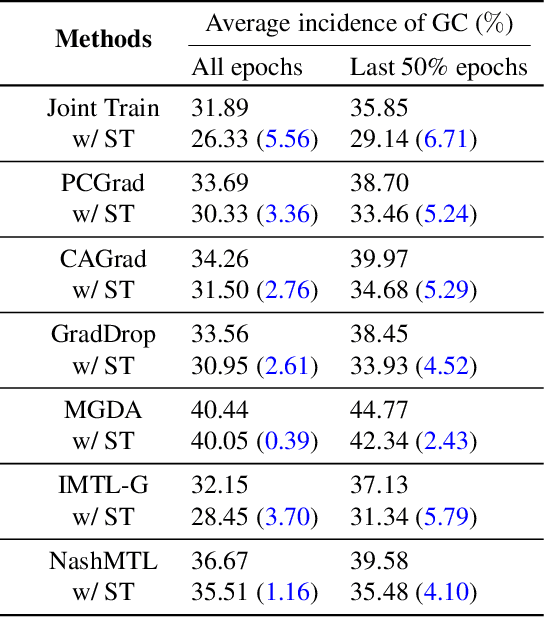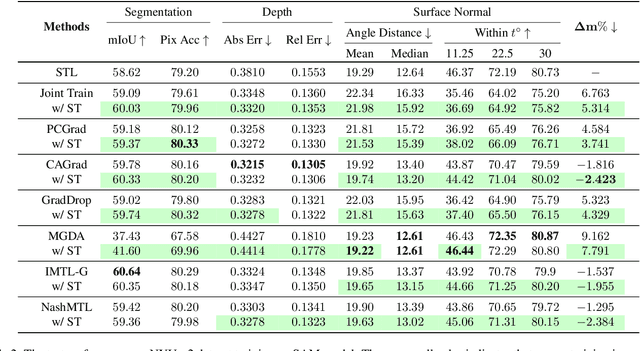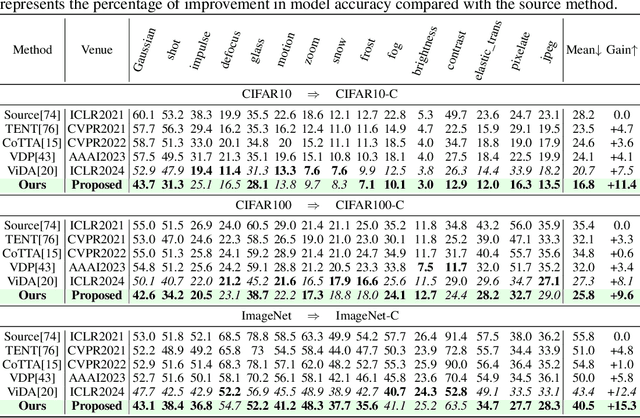Gaole Dai
MoLe-VLA: Dynamic Layer-skipping Vision Language Action Model via Mixture-of-Layers for Efficient Robot Manipulation
Mar 26, 2025Abstract:Multimodal Large Language Models (MLLMs) excel in understanding complex language and visual data, enabling generalist robotic systems to interpret instructions and perform embodied tasks. Nevertheless, their real-world deployment is hindered by substantial computational and storage demands. Recent insights into the homogeneous patterns in the LLM layer have inspired sparsification techniques to address these challenges, such as early exit and token pruning. However, these methods often neglect the critical role of the final layers that encode the semantic information most relevant to downstream robotic tasks. Aligning with the recent breakthrough of the Shallow Brain Hypothesis (SBH) in neuroscience and the mixture of experts in model sparsification, we conceptualize each LLM layer as an expert and propose a Mixture-of-Layers Vision-Language-Action model (MoLe-VLA, or simply MoLe) architecture for dynamic LLM layer activation. We introduce a Spatial-Temporal Aware Router (STAR) for MoLe to selectively activate only parts of the layers based on the robot's current state, mimicking the brain's distinct signal pathways specialized for cognition and causal reasoning. Additionally, to compensate for the cognitive ability of LLMs lost in MoLe, we devise a Cognition Self-Knowledge Distillation (CogKD) framework. CogKD enhances the understanding of task demands and improves the generation of task-relevant action sequences by leveraging cognitive features. Extensive experiments conducted in both RLBench simulation and real-world environments demonstrate the superiority of MoLe-VLA in both efficiency and performance. Specifically, MoLe-VLA achieves an 8% improvement in the mean success rate across ten tasks while reducing computational costs by up to x5.6 compared to standard LLMs.
Advancing Mobile GUI Agents: A Verifier-Driven Approach to Practical Deployment
Mar 21, 2025Abstract:We propose V-Droid, a mobile GUI task automation agent. Unlike previous mobile agents that utilize Large Language Models (LLMs) as generators to directly generate actions at each step, V-Droid employs LLMs as verifiers to evaluate candidate actions before making final decisions. To realize this novel paradigm, we introduce a comprehensive framework for constructing verifier-driven mobile agents: the discretized action space construction coupled with the prefilling-only workflow to accelerate the verification process, the pair-wise progress preference training to significantly enhance the verifier's decision-making capabilities, and the scalable human-agent joint annotation scheme to efficiently collect the necessary data at scale. V-Droid sets a new state-of-the-art task success rate across several public mobile task automation benchmarks: 59.5% on AndroidWorld, 38.3% on AndroidLab, and 49% on MobileAgentBench, surpassing existing agents by 9.5%, 2.1%, and 9%, respectively. Furthermore, V-Droid achieves an impressively low latency of 0.7 seconds per step, making it the first mobile agent capable of delivering near-real-time, effective decision-making capabilities.
Expanding Deep Learning-based Sensing Systems with Multi-Source Knowledge Transfer
Dec 05, 2024Abstract:Expanding the existing sensing systems to provide high-quality deep learning models for more domains, such as new users or environments, is challenged by the limited labeled data and the data and device heterogeneities. While knowledge distillation methods could overcome label scarcity and device heterogeneity, they assume the teachers are fully reliable and overlook the data heterogeneity, which prevents the direct adoption of existing models. To address this problem, this paper proposes an efficient knowledge transfer framework, HaKT, to expand sensing systems. It first selects multiple high-quality models from the system at a low cost and then fuses their knowledge by assigning sample-wise weights to their predictions. Later, the fused knowledge is selectively injected into the customized models for new domains based on the knowledge quality. Extensive experiments on different tasks, modalities, and settings show that HaKT outperforms stat-of-the-art baselines by at most 16.5% accuracy and saves up to 39% communication traffic.
Proactive Gradient Conflict Mitigation in Multi-Task Learning: A Sparse Training Perspective
Nov 27, 2024



Abstract:Advancing towards generalist agents necessitates the concurrent processing of multiple tasks using a unified model, thereby underscoring the growing significance of simultaneous model training on multiple downstream tasks. A common issue in multi-task learning is the occurrence of gradient conflict, which leads to potential competition among different tasks during joint training. This competition often results in improvements in one task at the expense of deterioration in another. Although several optimization methods have been developed to address this issue by manipulating task gradients for better task balancing, they cannot decrease the incidence of gradient conflict. In this paper, we systematically investigate the occurrence of gradient conflict across different methods and propose a strategy to reduce such conflicts through sparse training (ST), wherein only a portion of the model's parameters are updated during training while keeping the rest unchanged. Our extensive experiments demonstrate that ST effectively mitigates conflicting gradients and leads to superior performance. Furthermore, ST can be easily integrated with gradient manipulation techniques, thus enhancing their effectiveness.
Training-free Regional Prompting for Diffusion Transformers
Nov 04, 2024Abstract:Diffusion models have demonstrated excellent capabilities in text-to-image generation. Their semantic understanding (i.e., prompt following) ability has also been greatly improved with large language models (e.g., T5, Llama). However, existing models cannot perfectly handle long and complex text prompts, especially when the text prompts contain various objects with numerous attributes and interrelated spatial relationships. While many regional prompting methods have been proposed for UNet-based models (SD1.5, SDXL), but there are still no implementations based on the recent Diffusion Transformer (DiT) architecture, such as SD3 and FLUX.1.In this report, we propose and implement regional prompting for FLUX.1 based on attention manipulation, which enables DiT with fined-grained compositional text-to-image generation capability in a training-free manner. Code is available at https://github.com/antonioo-c/Regional-Prompting-FLUX.
Multimodal Large Language Models for Bioimage Analysis
Jul 29, 2024Abstract:Rapid advancements in imaging techniques and analytical methods over the past decade have revolutionized our ability to comprehensively probe the biological world at multiple scales, pinpointing the type, quantity, location, and even temporal dynamics of biomolecules. The surge in data complexity and volume presents significant challenges in translating this wealth of information into knowledge. The recently emerged Multimodal Large Language Models (MLLMs) exhibit strong emergent capacities, such as understanding, analyzing, reasoning, and generalization. With these capabilities, MLLMs hold promise to extract intricate information from biological images and data obtained through various modalities, thereby expediting our biological understanding and aiding in the development of novel computational frameworks. Previously, such capabilities were mostly attributed to humans for interpreting and summarizing meaningful conclusions from comprehensive observations and analysis of biological images. However, the current development of MLLMs shows increasing promise in serving as intelligent assistants or agents for augmenting human researchers in biology research
Implicit Neural Image Field for Biological Microscopy Image Compression
May 29, 2024Abstract:The rapid pace of innovation in biological microscopy imaging has led to large images, putting pressure on data storage and impeding efficient sharing, management, and visualization. This necessitates the development of efficient compression solutions. Traditional CODEC methods struggle to adapt to the diverse bioimaging data and often suffer from sub-optimal compression. In this study, we propose an adaptive compression workflow based on Implicit Neural Representation (INR). This approach permits application-specific compression objectives, capable of compressing images of any shape and arbitrary pixel-wise decompression. We demonstrated on a wide range of microscopy images from real applications that our workflow not only achieved high, controllable compression ratios (e.g., 512x) but also preserved detailed information critical for downstream analysis.
Decomposing the Neurons: Activation Sparsity via Mixture of Experts for Continual Test Time Adaptation
May 26, 2024



Abstract:Continual Test-Time Adaptation (CTTA), which aims to adapt the pre-trained model to ever-evolving target domains, emerges as an important task for vision models. As current vision models appear to be heavily biased towards texture, continuously adapting the model from one domain distribution to another can result in serious catastrophic forgetting. Drawing inspiration from the human visual system's adeptness at processing both shape and texture according to the famous Trichromatic Theory, we explore the integration of a Mixture-of-Activation-Sparsity-Experts (MoASE) as an adapter for the CTTA task. Given the distinct reaction of neurons with low/high activation to domain-specific/agnostic features, MoASE decomposes the neural activation into high-activation and low-activation components with a non-differentiable Spatial Differentiate Dropout (SDD). Based on the decomposition, we devise a multi-gate structure comprising a Domain-Aware Gate (DAG) that utilizes domain information to adaptive combine experts that process the post-SDD sparse activations of different strengths, and the Activation Sparsity Gate (ASG) that adaptively assigned feature selection threshold of the SDD for different experts for more precise feature decomposition. Finally, we introduce a Homeostatic-Proximal (HP) loss to bypass the error accumulation problem when continuously adapting the model. Extensive experiments on four prominent benchmarks substantiate that our methodology achieves state-of-the-art performance in both classification and segmentation CTTA tasks. Our code is now available at https://github.com/RoyZry98/MoASE-Pytorch.
SpikeNVS: Enhancing Novel View Synthesis from Blurry Images via Spike Camera
Apr 12, 2024Abstract:One of the most critical factors in achieving sharp Novel View Synthesis (NVS) using neural field methods like Neural Radiance Fields (NeRF) and 3D Gaussian Splatting (3DGS) is the quality of the training images. However, Conventional RGB cameras are susceptible to motion blur. In contrast, neuromorphic cameras like event and spike cameras inherently capture more comprehensive temporal information, which can provide a sharp representation of the scene as additional training data. Recent methods have explored the integration of event cameras to improve the quality of NVS. The event-RGB approaches have some limitations, such as high training costs and the inability to work effectively in the background. Instead, our study introduces a new method that uses the spike camera to overcome these limitations. By considering texture reconstruction from spike streams as ground truth, we design the Texture from Spike (TfS) loss. Since the spike camera relies on temporal integration instead of temporal differentiation used by event cameras, our proposed TfS loss maintains manageable training costs. It handles foreground objects with backgrounds simultaneously. We also provide a real-world dataset captured with our spike-RGB camera system to facilitate future research endeavors. We conduct extensive experiments using synthetic and real-world datasets to demonstrate that our design can enhance novel view synthesis across NeRF and 3DGS. The code and dataset will be made available for public access.
HUB: Guiding Learned Optimizers with Continuous Prompt Tuning
May 31, 2023Abstract:Learned optimizers are a crucial component of meta-learning. Recent advancements in scalable learned optimizers have demonstrated their superior performance over hand-designed optimizers in various tasks. However, certain characteristics of these models, such as an unstable learning curve, limited ability to handle unseen tasks and network architectures, difficult-to-control behaviours, and poor performance in fine-tuning tasks impede their widespread adoption. To tackle the issue of generalization in scalable learned optimizers, we propose a hybrid-update-based (HUB) optimization strategy inspired by recent advancements in hard prompt tuning and result selection techniques used in large language and vision models. This approach can be easily applied to any task that involves hand-designed or learned optimizer. By incorporating hand-designed optimizers as the second component in our hybrid approach, we are able to retain the benefits of learned optimizers while stabilizing the training process and, more importantly, improving testing performance. We validate our design through a total of 17 tasks, consisting of thirteen training from scratch and four fine-tuning settings. These tasks vary in model sizes, architectures, or dataset sizes, and the competing optimizers are hyperparameter-tuned. We outperform all competitors in 94% of the tasks with better testing performance. Furthermore, we conduct a theoretical analysis to examine the potential impact of our hybrid strategy on the behaviours and inherited traits of learned optimizers.
 Add to Chrome
Add to Chrome Add to Firefox
Add to Firefox Add to Edge
Add to Edge